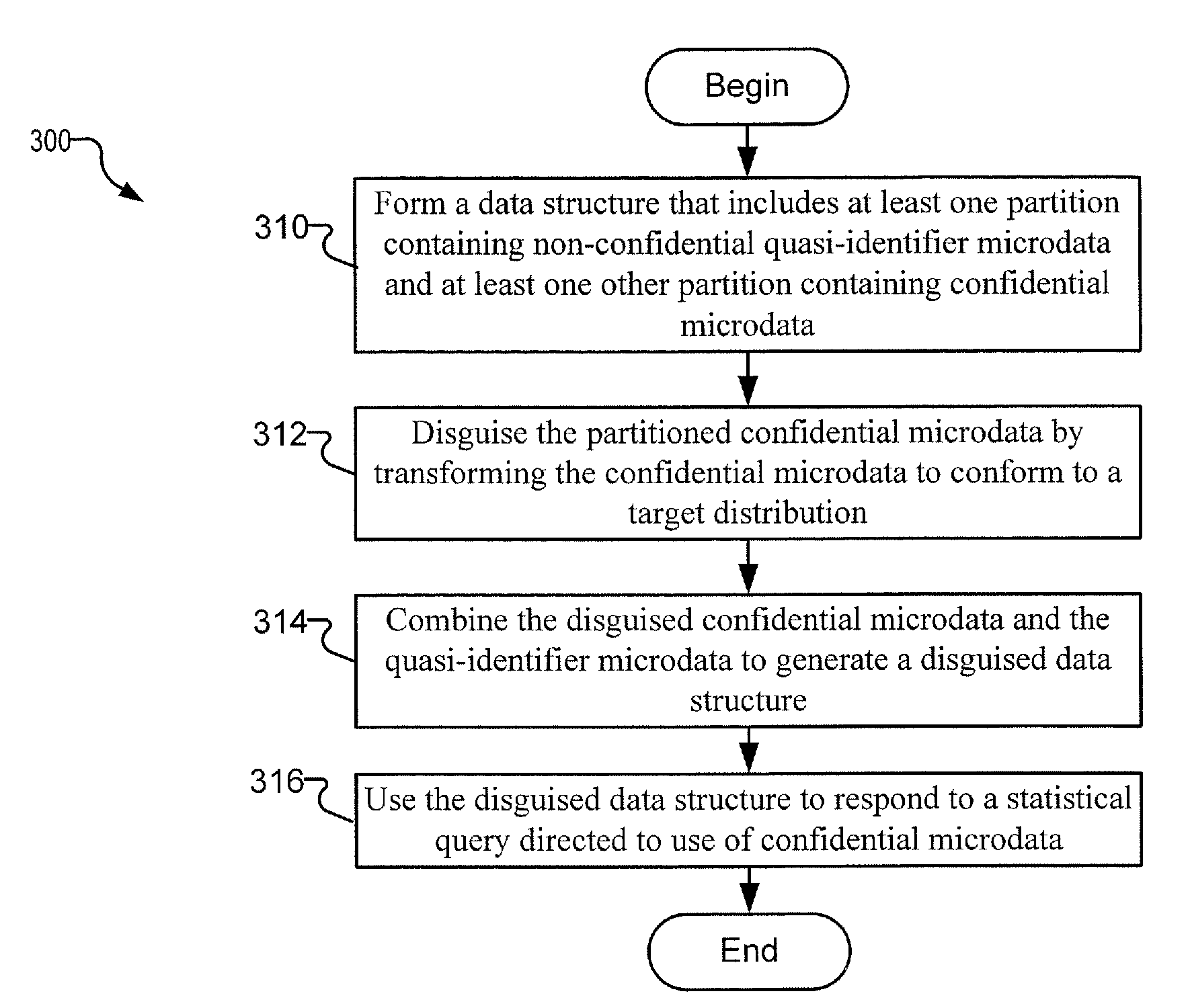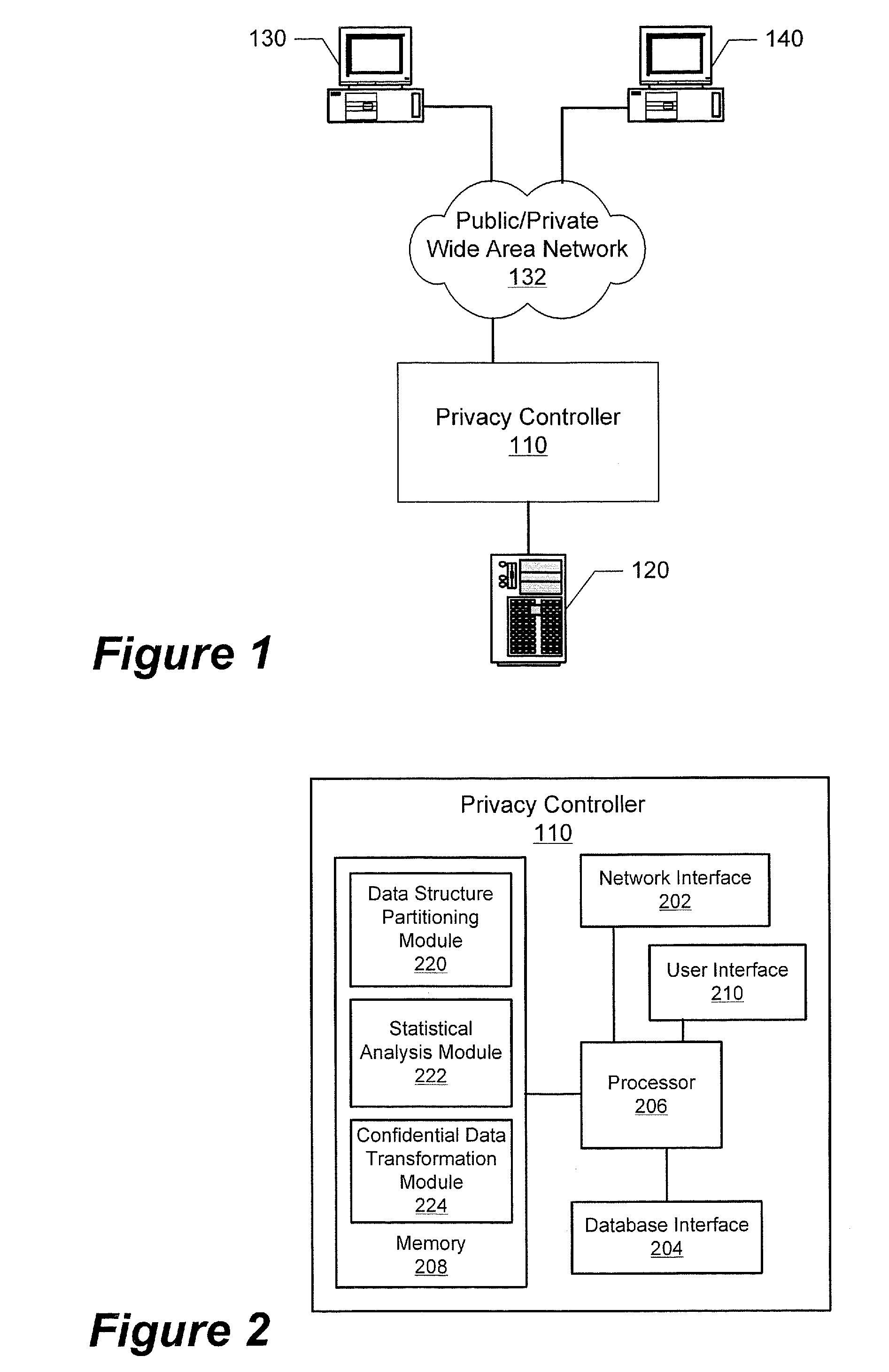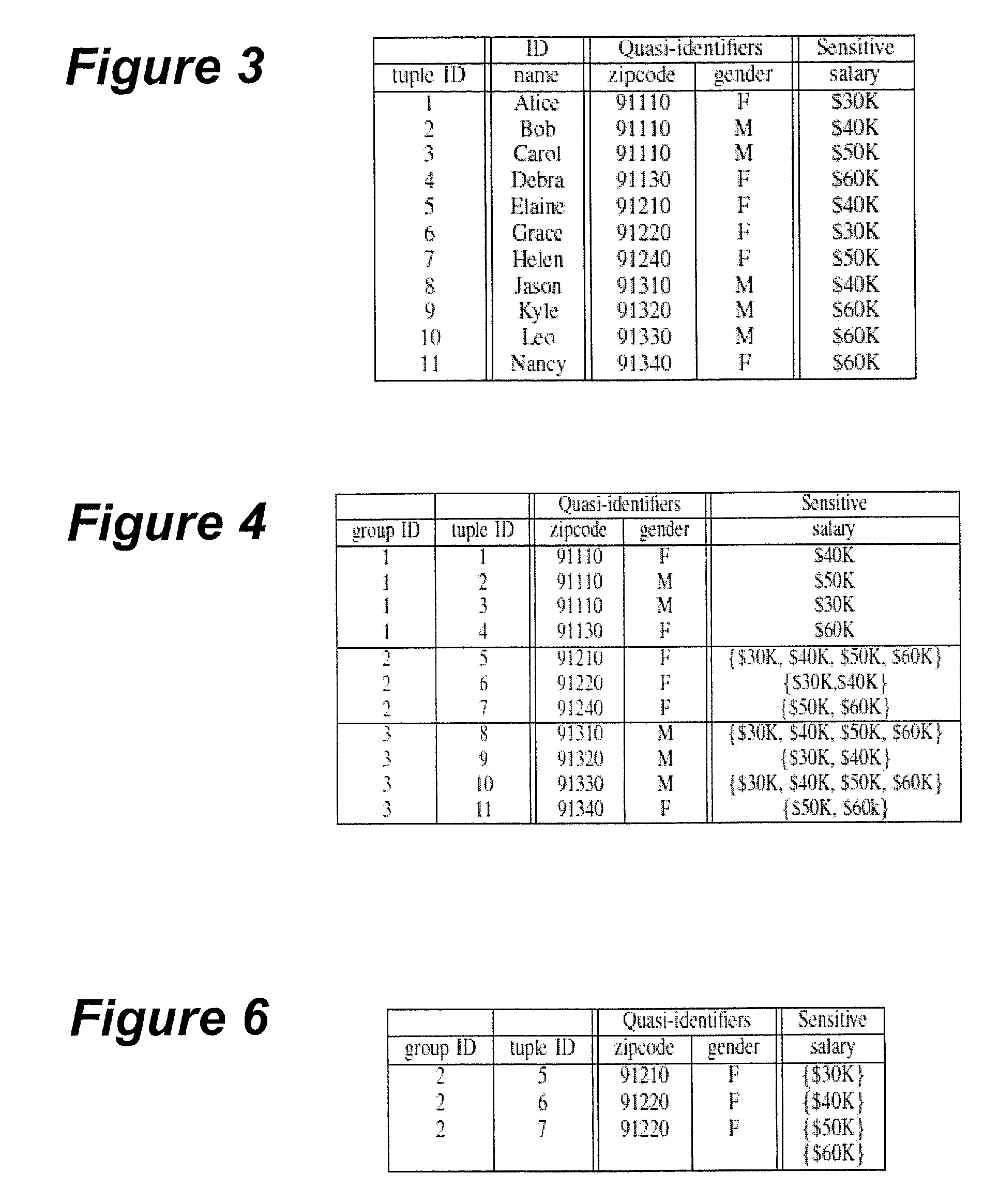Systems and associated computer program products that disguise partitioned data structures using transformations having targeted distributions
- Summary
- Abstract
- Description
- Claims
- Application Information
AI Technical Summary
Problems solved by technology
Method used
Image
Examples
example 1
[0089]Here we use an example to show in detail how an exemplary embodiment of the algorithm may be carried out by the privacy controller 110. Consider the privacy-annotated hierarchy H in FIG. 5 and a multiset g of sensitive attribute values {30K, 30K, 40K, 40K, 50K, 60K}.
[0090]At the beginning, the algorithm sets m to |g|=6, and calls MinSumOfRange(g, H, m). For the two children of the root of H, we have |g{30K,40K}|=4 and |g{50K,60K}|=2. Since the ratio between the weights of {30K, 40K} and {50K, 60K} is 1:1 in H, we can at most have two subdomains in the subtree rooted at {30K, 40K} in the final P-private generalization. Otherwise, the background distribution cannot be preserved. In other words, the maximum m-bound allocation is (2, 2). And the algorithm outputs 6−2−2=2 generalized domain corresponding to the root, which is {30K, 40K, 50K, 60K}. This means that any P-private generalization should contain at least two root domains.
[0091]Next, the algorithm calls MinSumOfRange(g, H...
example 2
[0102]Suppose g={1, 3, 5}, t=2, and H is the uniform distribution over {1, . . . , 8}. The optimal solution is for f to have only one fake value (either 7 or 8). We can verify that any f with two fake values is suboptimal. This example suggests that it is not sufficient to only examine set f that contains exactly t fake tuples.
[0103]It can be shown that there exists fake value set f which is locally optimal but suboptimal globally. By locally optimal, we mean that for any f1 and f2, where |f1|=|f−1 and |f2|=|f|+1, we have minSOR(g ∪ f1, H)>minSOR(g ∪ f, H) and minSOR(g ∪ f2, H)>minSOR(g ∪ f, H).
example 3
[0104]Consider g={1, 3, 5, 7} and t=4. We can see that f={1, 5} is a locally optimal solution. The optimal generalization for g ∪ f is {[1-2], [3-4], [5-6], [7-8], [1-4], [5-8]}, whose sum of ranges is 10. For any f1 with size 1, the optimal generalization for g ∪ f1 is {[1-2], [3-4], [5-6], [7-8], [1-8]}, whose sum of ranges is 11. Similarly, for any f2 with size 3, the optimal generalization for g ∪ f2 is {[1-2], [3-4], [5-6], [7-8], [1-4], [5-8], [1-8]1, whose sum of ranges is 17. Though f is locally optimal, it is not a globally optimal solution, which should be f={2, 4, 6, 8}, as minSOR(g ∪ f, H)=0.
[0105]The above example shows that problem 5.1 cannot be solved by sequentially scanning fake value sets from size 0 to size t and using local optimality as a stopping condition.
[0106]To further show the challenges in solving this problem, let us consider a simpler case. Suppose we only allow to add a single fake value, and the background distribution is uniform. Assume in g the numb...
PUM
 Login to View More
Login to View More Abstract
Description
Claims
Application Information
 Login to View More
Login to View More - R&D
- Intellectual Property
- Life Sciences
- Materials
- Tech Scout
- Unparalleled Data Quality
- Higher Quality Content
- 60% Fewer Hallucinations
Browse by: Latest US Patents, China's latest patents, Technical Efficacy Thesaurus, Application Domain, Technology Topic, Popular Technical Reports.
© 2025 PatSnap. All rights reserved.Legal|Privacy policy|Modern Slavery Act Transparency Statement|Sitemap|About US| Contact US: help@patsnap.com



